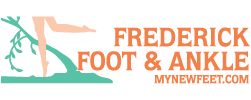Flat feet have carried a stigma in the past, although many people have them without even realizing it. There are three types of stances that appear in feet, and these stances can change when standing: pes planus (flat foot), neutral, and pes cavus (high arches). Each foot type has its own type of care that can keep them from causing you any kind of pain, and even perfectly arched feet can benefit from preservative care.
Flat feet can be deceiving, because the arch of your foot changes when you are weight bearing. This means that even if your feet look like they have an arch when you’re sitting, the bones in your feet can collapse when you stand, causing the bones to rub against each other and the tendons in your foot to stretch quickly and more than necessary. This can lead to arthritis in the joints in your foot, tendonitis in your ankle, and/or plantar fasciitis in the bottom of your foot.
Alternately, high arched feet have are composed as a more rigid structure, with an angle higher than that of the neutral arch. This can be compensated for with custom inserts or padding, preventing pressure injuries on the ball or heel of your foot.
While high arched feet can cause issues, it is more likely that flat feet could be the root of foot pain, many of which you feel primarily in your heel or the arch of your foot. Without the proper supports, flat feet can even change the alignment of your hips and lower legs. It may feel uncomfortable at first, but rigid arch supports are the best for this foot type.
To test the rigidity of the orthotics, simply bend the orthotic at the arch using your hands. If the insert folds in half, especially if it is very easy for you to fold it, the arch is not rigid enough and you should look for another insert. While such a hard insert may seem counterintuitive, the soft inserts are of no use to provide support, leaving your foot to work overtime on its own. The overworking of the tendons and ligaments would be what is causing your foot pain in the first place.
We offer different types of supports in our office, ranging from braces that extend up the ankle to provide extra stability, to simple inserts that can be placed in the sole of the shoe, never to be seen when the shoes are on. Custom orthotics are covered by many insurances, and are made to match your foot using casting material or a digital scanner to notate the shape and depth of all areas of your foot. If your insurance does not cover custom orthotics, or if you are hesitant to try them, we also offer many different forms of semi-custom inserts, all of which feature a rigid arch support and will become shaped to your foot with recurrent wear. Make an appointment with our office today to have your foot evaluated to see if you would benefit from supports in your life.

Add a Comment